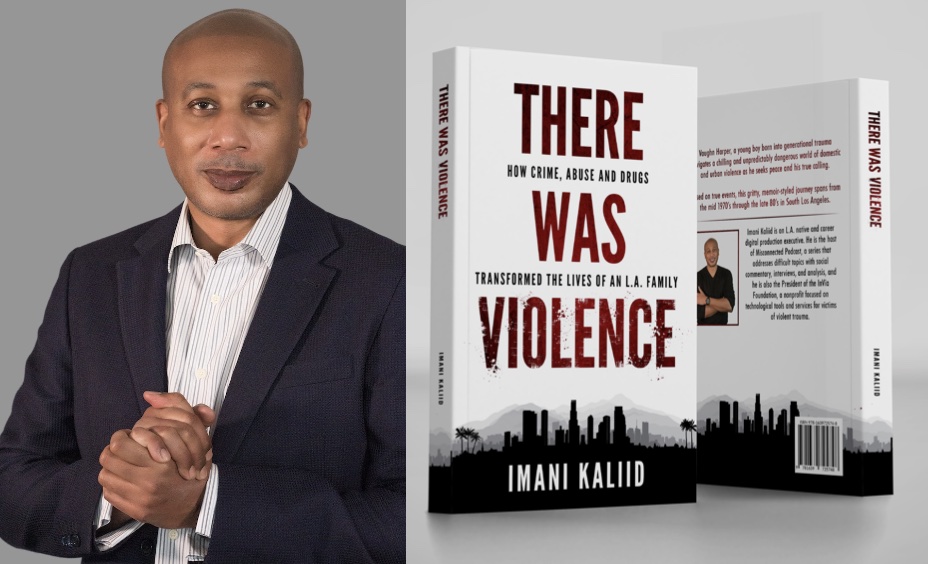 Imani Kaliid: Author "There Was Violence, President of InVia Foundation 501(c)(3), Host of "Misconnected Podcast," and Violence Prevention Advocate & SurvivorGrowing up as an inner-city kid in Los Angeles, Imani Kaliid is no stranger to domestic and street violence.
Imani Kaliid: Author "There Was Violence, President of InVia Foundation 501(c)(3), Host of "Misconnected Podcast," and Violence Prevention Advocate & SurvivorGrowing up as an inner-city kid in Los Angeles, Imani Kaliid is no stranger to domestic and street violence."I’ve been up close and personal with physical altercations with family and witnessed armed assaults - you name it. After college, I entered the world of corporate America, in a safer neighborhood, internationally traveled, and was sheltered from the violence. Unfortunately, sometimes violence finds you. Fortunately, I credit my safety with tips learned in my youth." - Kaliid
Explore these four tips to stay safe and avoid a violent crisis:
1. Be Aware of Surroundings
Give surroundings a good once-over upon arrival (home included). Violence won’t announce its presence nor the timing in which it will strike. Have key details top of mind to respond to threats as quickly as possible, versus clumsily planning during a threatening crisis.
Check the social temperature (people’s temperament) and where exits are located. Make it a point to see who the attendees are, what businesses are nearby, and what can be used to distract an attacker for self-defense (i.e., a chair or hot beverage).
2. Create an Exit Plan
When it’s clear that the potential threat of danger is growing, refer back to the mental notes made when observing surroundings. Perhaps quietly leave the venue or factor in distance to run for safety or agility in scaling a fence.
3. De-Escalate, But Prepare For Flight or Fight
At the end of the day, returning home safe and sound, instead of the hospital or worse, is priority. When faced with the threat of a brawl, people sometimes take a stance of passiveness as to not escalate a situation further. Oftentimes, at bars, smaller men will show hostility towards bigger men, but the bigger guys often respond with softer tones and back down because it’s not worth it. Regardless, always quietly prepare for a physical confrontation or exiting the venue (recommended). Some aggressors are looking for that push back to receive the confrontation desired.
Raise hands at shoulder level (defensive posture), verbally pacify, and remember, less is more. Maybe this person is drunk, has emotional issues, or needs to get verbal aggression out of their system.
4. Follow the Gut (Intuition)
Brains are supercomputers that know more on a subconscious level. If something doesn’t feel right, it probably isn’t. If intuition indicates that a person, venue, time, or a combination of all three feels unsafe, trust enough to believe that there's a good reason to leave or simply stay home.
Bonus Tip: Create a Safety Pod
Choose three to five reliable friends and create a group thread on a smart phone’s messaging app. Use the single-click function to drop a location.
If there is an active shooter, robbery or some brawl ramping up, there's no time to search through your contact list and compose messages and...
a) Share the location.b) Describe the dangerous details in progress (i.e. active shooter, robbery, sexual aggressor).
Agree on single- or two-word messages that translate to Send the police! (i.e. Blue Marlin) or Active shooter here! (Trader Joe’s).
About Imani Kaliid
Imani Kaliid is the author of “There Was Violence,” President of the InVia Foundation and host of the “Misconnected Podcast.”
The InVia Foundation is a 501(c)(3) nonprofit entity based in California that is focused on technological tools and services for victims of violent trauma. “There Was Violence” serves as a relatable testimony and unfortunately common experience for multitudes of victims who remain silent, struggling or healing, which is why Kaliid sought a more direct avenue to connect and contribute to the world by establishing the InVia Foundation to save victims in need.
Access Links:
Apple Books: https://books.apple.com/us/audiobook/there-was-violence-how-crime-abuse-and-drugs/id1579108431
Google Books: https://play.google.com/store/books/details/Imani_Kaliid_There_Was_Violence?id=RPM4EAAAQBAJ
Bonus Testimonial: https://www.youtube.com/channel/UCTWfAwJUmct4H0x-UMCjHKw/videos
Media Contact
Company Name: Ruth Davis Consulting LLC
Contact Person: Ruth Davis
Email: Send Email
Country: United States
Website: www.RuthDavisConsulting.com
